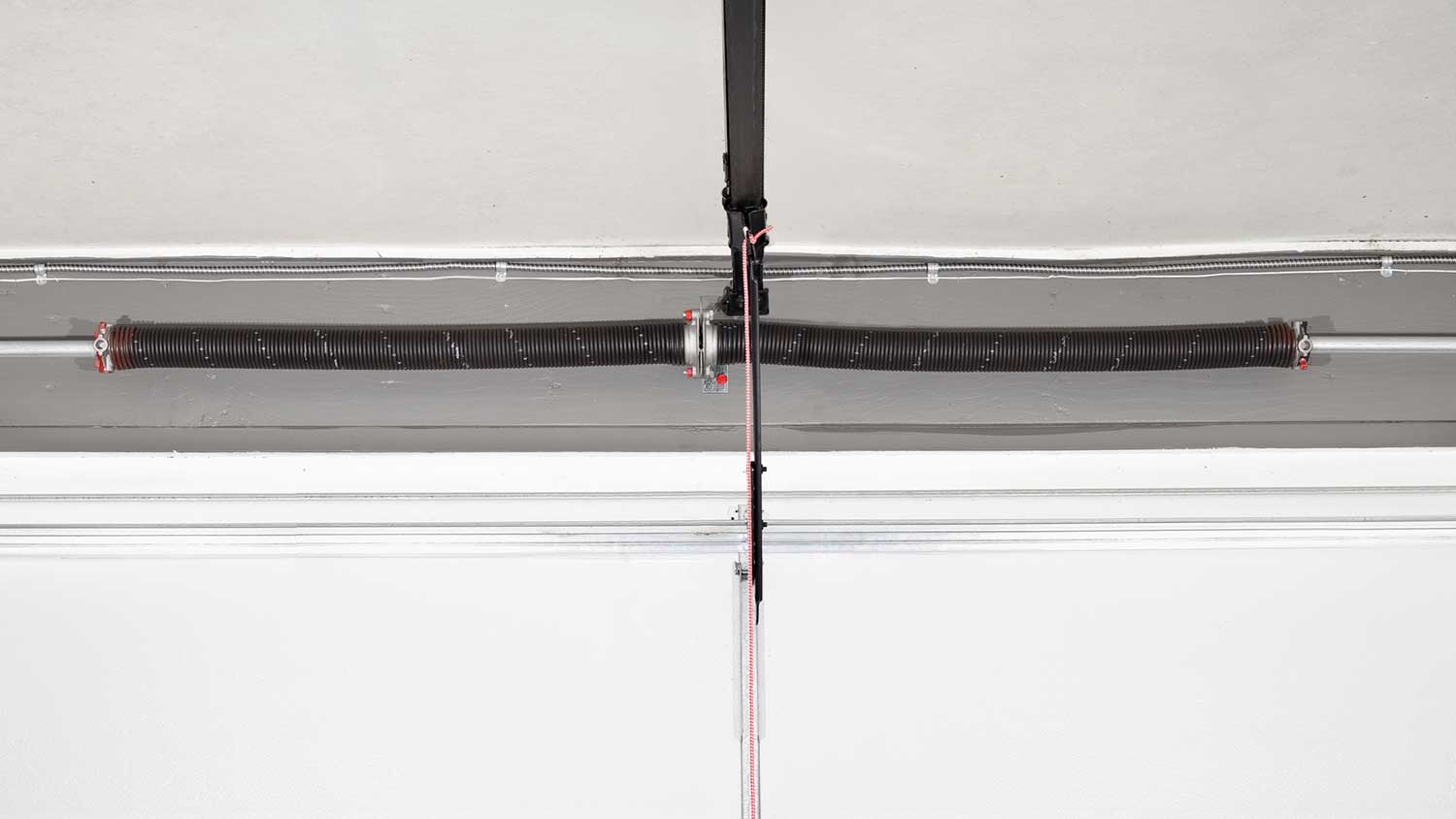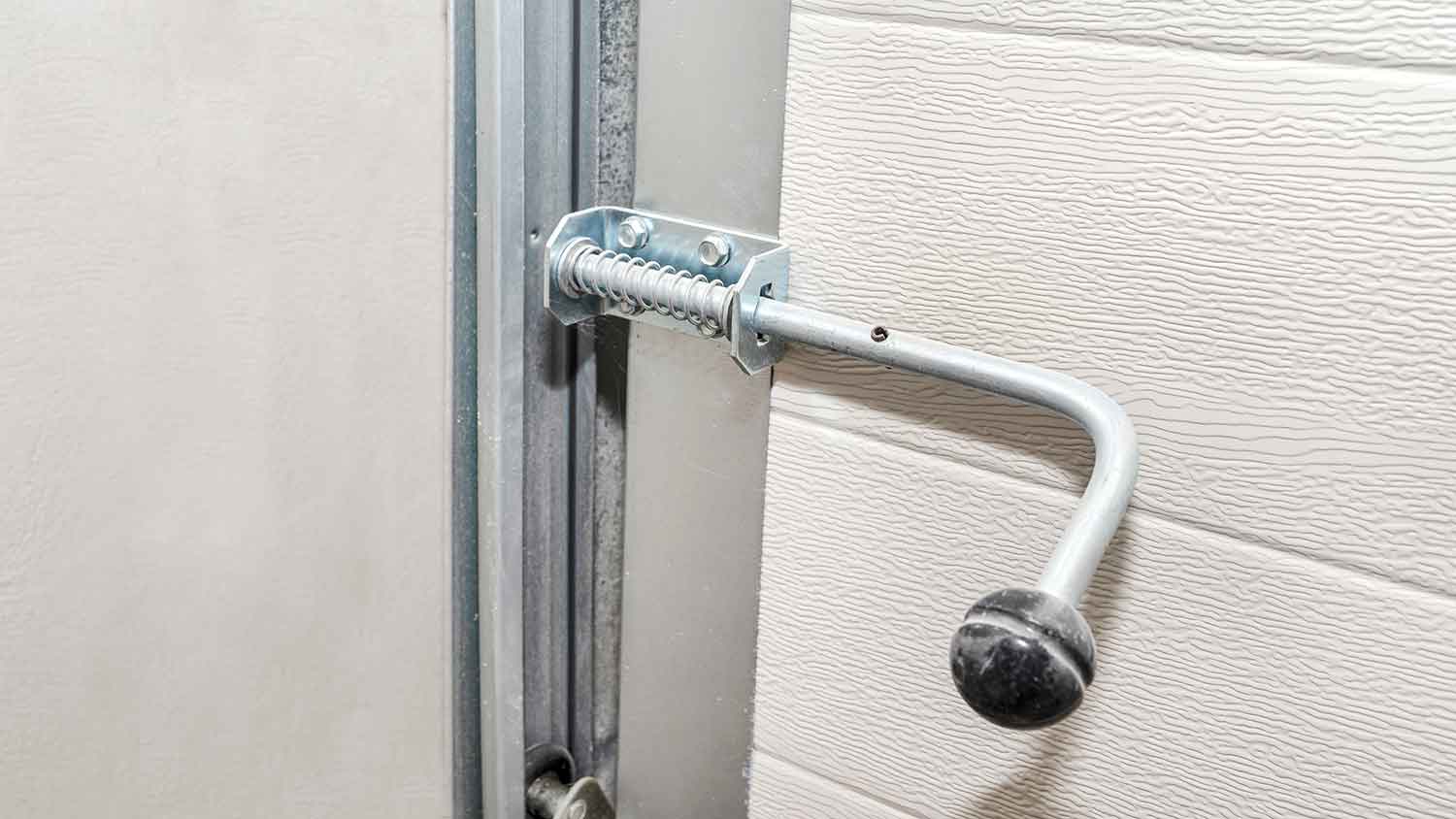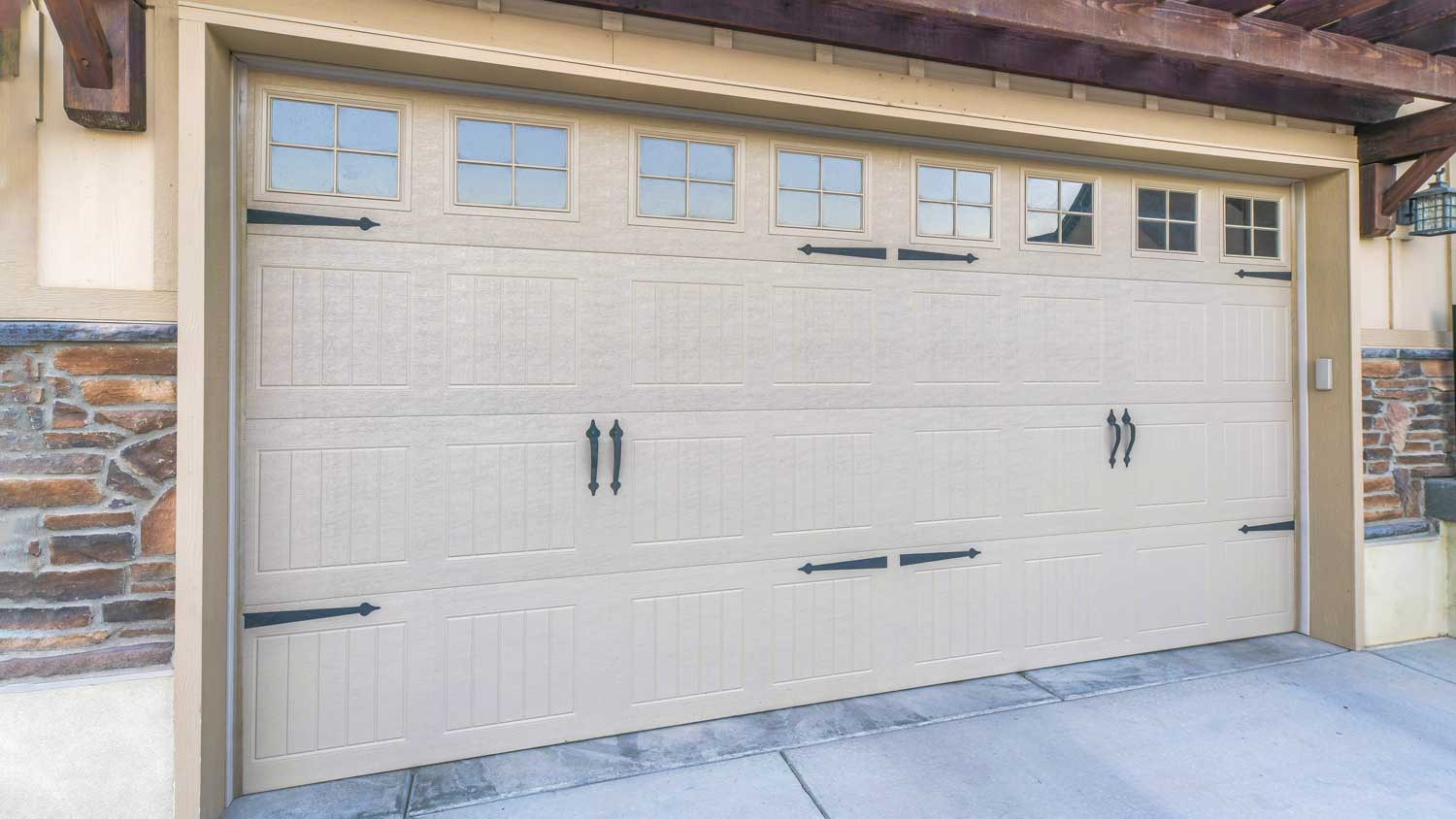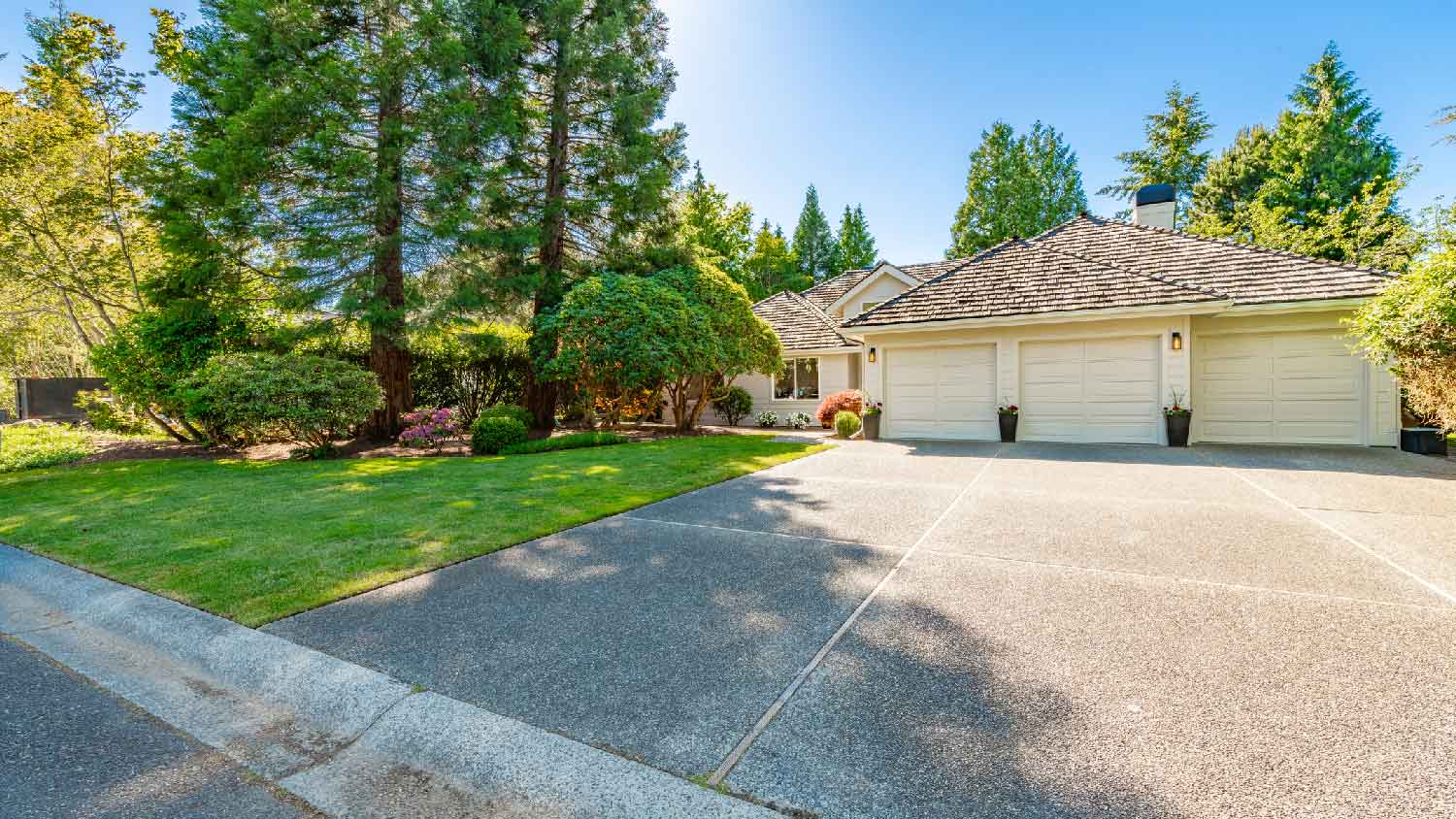10 Reasons Your Garage Door May Not Be Opening
Let’s open up some solutions


Never force a stuck door open; it can damage the tracks.
Broken springs are dangerous to diagnose and repair on your own.
Rust buildup can weaken key components over time and prevent your door from opening.
A garage door that won’t open can quickly ruin your day. Fortunately, many common issues, like remote control problems, are easy to identify and fix. However, for more complex repairs, like broken tension springs or electrical malfunctions, you’ll need to call a pro to save time and prevent further damage. Let’s dive into the most common reasons why your garage door might not work and how to get it back on track.
Replacing garage doors and garage door springs can be dangerous. Garage doors are very heavy and the springs are under a lot of tension. A garage door pro has the tools and experience to do this project safely.
1. Track Misalignment or Obstruction
Tracks are the metal rails running vertically along both sides of your garage door and up along the garage’s ceiling to guide the door’s movement. If these tracks become misaligned or blocked, your door may jerk, make grinding noises, or stop moving altogether. Be careful not to force the door open if it’s stuck, as this can damage the tracks.
Small obstructions or dirt on the tracks can often be removed with simple cleaning, but bent or misaligned tracks usually require a professional’s expertise. A local garage door repair technician can safely realign or replace damaged tracks.
2. Faulty Tension Springs

Tension springs are mounted horizontally above the garage door opening, typically near the ceiling or on a bar that spans the width of the door. These springs are critical for lifting the heavy weight of the door, and when they break, the door can suddenly slam shut or become impossible to lift. A door that feels excessively heavy to lift can indicate an issue with the spring.
A broken spring can also snap with tremendous force, which can cause serious injury, so it’s important to fix it as soon as you notice an issue. However, replacing tension springs is extremely dangerous due to the high level of stored energy in the coils, so only a qualified pro should handle this problem.
3. Remote Control Problems
The remote control activates your garage door. When it stops working, it may be due to dead batteries, a faulty signal, or programming problems. Since it’s the simplest fix, replacing the batteries and resetting the remote should be your first step. If that doesn’t solve the issue, check that the opener’s antenna is unobstructed and in good condition since damage can disrupt the signal.
If the remote still doesn’t work after replacing the batteries and verifying the health of the antenna, the remote control may need to be reprogrammed or replaced entirely.
4. Mechanical Problems With the Garage Door Opener

The garage door opener is the powerhouse behind your door’s movement, physically lifting and lowering it with each use, so it’s a common culprit behind garage door problems. Unlike the remote control, which sends signals to activate the door, the opener handles the heavy lifting. If it’s not working, you might notice the motor running without the door moving, or the system may be completely unresponsive.
Common problems include a burned-out motor, stripped gears, or a disconnected trolley carriage. Openers that use chains may also experience issues if the chain tension is too loose. Since opener repairs involve complicated mechanical components, it’s safest to call a professional to diagnose and repair the problem.
5. Electrical Problems
Electrical problems can stop your garage door system from working entirely. The first thing to check is whether the opener is properly plugged in and receiving power. If that all seems fine, then a tripped circuit breaker or blown fuse might be the culprit, so make sure to check the electrical panel and reset the circuit breaker, if needed. If the door still isn’t working, then damaged wiring might be your problem.
Ignoring electrical problems can lead to more significant damage or pose a fire hazard. If you’ve ruled out basic issues like power supply or circuit breakers, it’s best to call a professional to inspect and repair the wiring safely.
6. Disconnected Emergency Release Cord
The emergency release cord is typically a red rope hanging from the garage door opener on the ceiling, which is designed to disengage the door from the opener so it can be operated manually. If this cord is pulled, the door disconnects from the opener and will no longer open or close automatically.
To fix this, first, ensure the door is fully closed to prevent it from slamming shut during the fix. Then you’ll need to reset the emergency release mechanism by pulling the cord straight down, then toward the opener to re-engage the trolley with the carriage. You’ll often hear a click when it locks back into place.
7. Broken Hardware
Broken hardware, like hinges, brackets, and bolts, can throw your garage door out of sync and make it noisy or wobbly. You might also notice parts of the door looking uneven or shifting out of place. Ignoring these issues can put extra stress on other components and lead to bigger (and more expensive) problems.
Checking for loose bolts or visible damage is a great starting point. While you can tighten things up if needed, replacing broken or worn-out hardware is best left to a pro. They’ll make sure everything’s secure and running smoothly, so you don’t have to worry about further trouble.
8. Engaged Manual Lock

The manual lock on your garage door is a built-in security feature designed to keep the door secure when needed. If it’s accidentally engaged, your garage door won’t budge, no matter how many times you press the opener. This can happen if someone turns the lock handle without realizing it or if the lock gets bumped into position.
To fix this, check the lock handle on the inside of the door. If it’s turned into the locked position, simply rotate it back to unlock the door. Once the lock is disengaged, your garage door should work normally again.
9. Weather Problems
Cold temperatures can cause metal components like springs and tracks to contract, making the door stick or move unevenly. Freezing rain or snow can also create ice buildup, which can block the tracks or freeze the door shut. Even intense heat can warp certain materials, leading to alignment issues.
To address weather-related problems, start by checking for ice or debris around the door and clearing it away. Applying a silicone-based lubricant to moving parts can help prevent sticking in cold weather. But if extreme temperatures are causing ongoing issues, consider upgrading your weather stripping or consulting a pro to ensure your garage door is ready to handle your climate.
10. Rust Buildup
Rust buildup on your garage door’s components, like springs, tracks, or hinges, can interfere with the door opening and closing. If this is the problem, you might notice grinding noises, jerky movements, and visible rust patches on the metal. Left untreated, rust can spread and cause components to break.
To address rust, clean the affected areas with a cloth and apply a silicone-based lubricant to prevent further corrosion. If the rust is severe or parts are significantly weakened, it’s best to have a professional replace them to ensure your garage door remains safe and reliable. Regular maintenance, like lubricating moving parts, can help keep rust at bay in the future.















